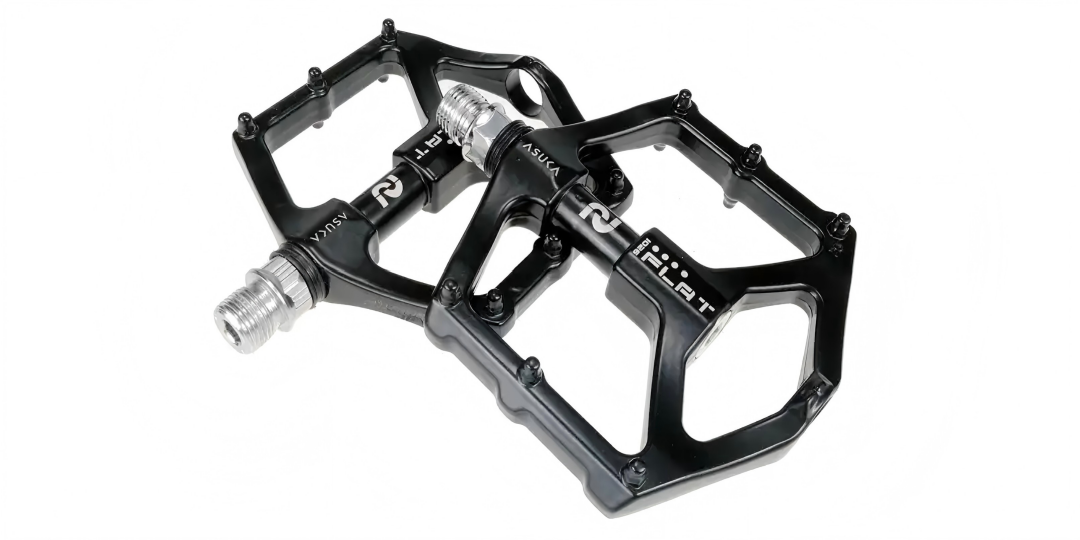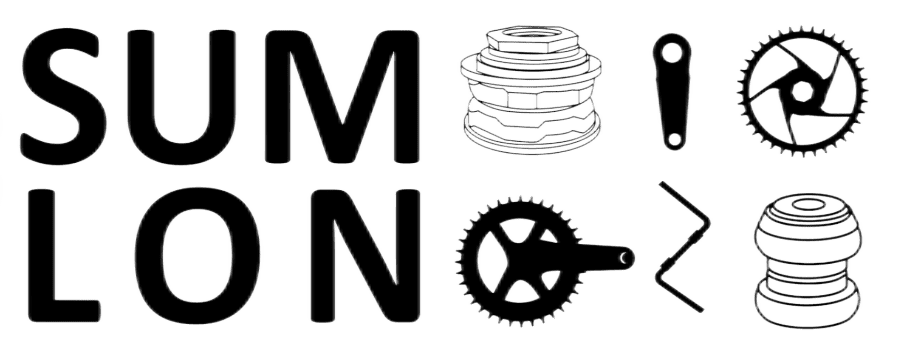Bicycle pedal types were originally very simple. They consisted of an axle, bearings, and a platform. They had no pins or clips. This design remains in use today. As demands for break resistance, lightness, anti-slip, and anti-release grew stronger, this basic pedal structure evolved into many different bike pedal types.
1. Flat Pedal
Flat pedals are the simplest type mentioned above. Based on the platform, flat pedals also come in many varieties.
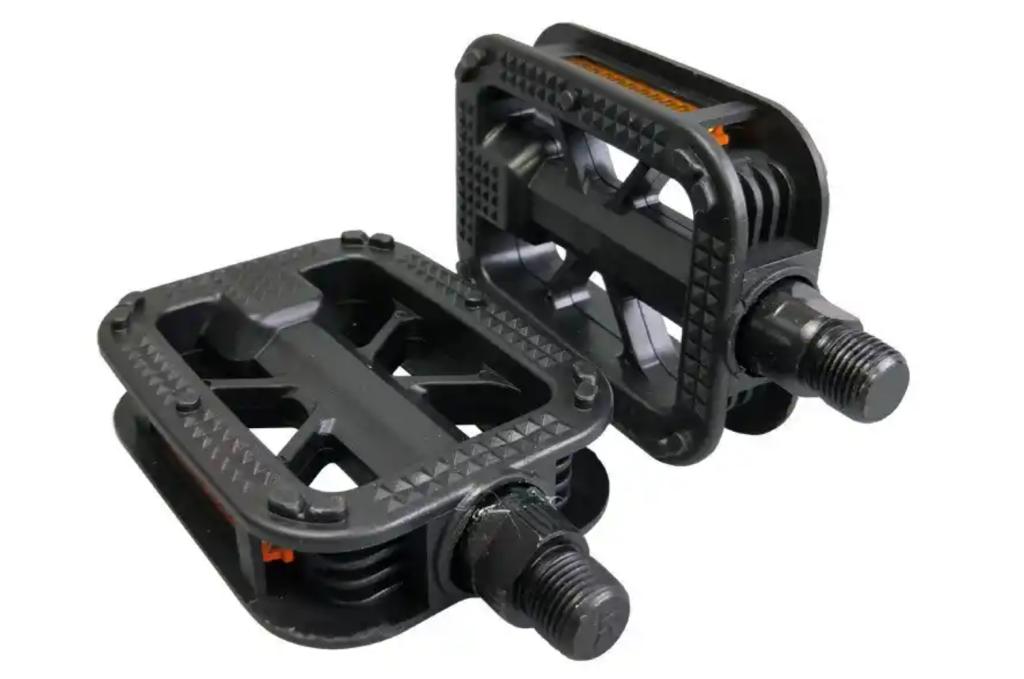
1.1 Flat Pedal with Pinless Platform and Non-Skid Flat Pedal
This is the most basic style. It has an axle, bearings, and a platform. It provides only the fundamental pedal function.
1.2 Non-Skid Flat Pedal
Simply adding nylon bumps to the platform surface no longer meets cyclists’ growing anti-slip needs. Designers now add extra features to platforms. Examples include anti-slip nails and traction plates. Similarly, pinless flat pedals have spawned many non-skid flat pedal types. These include pedals with pinned platforms, pedals with replaceable traction pins, and pedals with serrated-edge platforms.
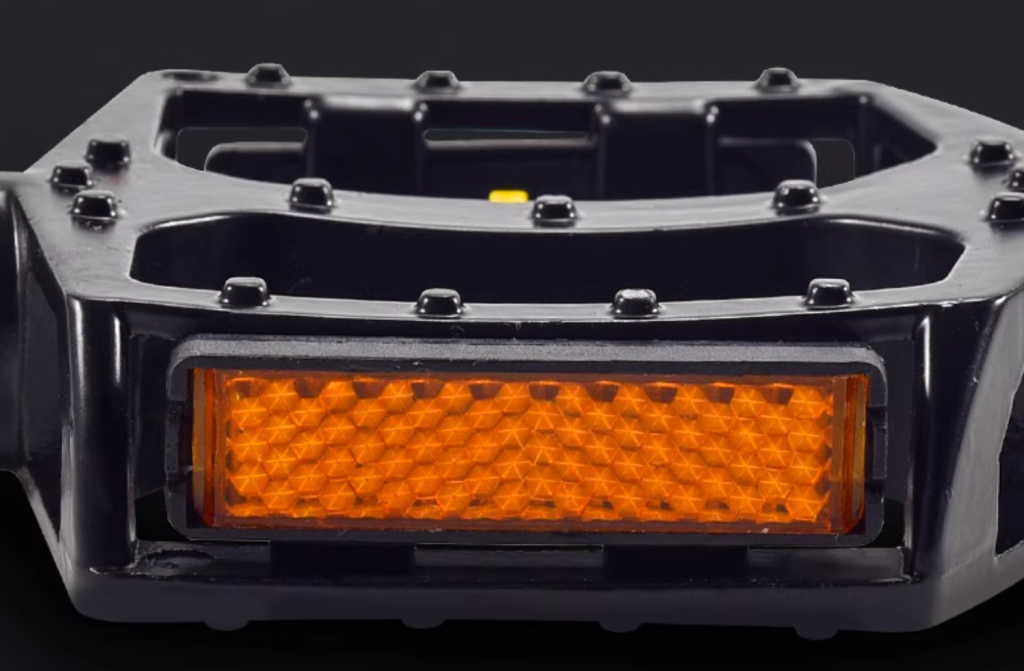
1.2.1 Pedal with Pinned Platform
This pedal has many names. Alternatives include pedal with fixed traction pins, pedal with anti-skid nails, pedal with anti-skid pins, and pedal with anti-slip pins. They all refer to the same thing. Metal anti-slip pins are embedded into the platform.
Pinned bike pedals excel in tough conditions. They boost grip and stability. For mountain biking, trails feature rocks, mud, steep slopes, and roots. Pins dig into mountain bike shoe treads. This keeps feet secure during bumps, hard brakes, or pedaling. It prevents power loss or crashes from slipping. In bad weather, rain, snow, or mud reduce traction. Regular pedals struggle to hold feet. Pinned pedals grip better. They minimize foot slip in puddles or mud. This ensures safety. For intense off-road or stunt riding, jumps and sharp turns demand foot “lock.” Pinned pedals provide strong hold. They help riders perform tricks safely. They reduce the risk of feet detaching.
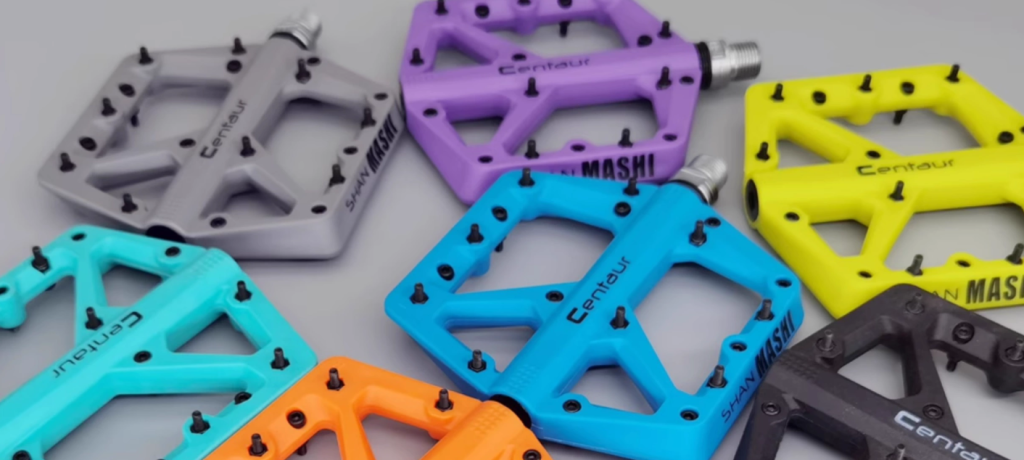
1.2.2 Pedal with Replaceable Traction Pins
Some pinned pedals have removable pins. At first, I wondered why. Why did designers make pins detachable? This question puzzled me for a long time.
Detachable pins serve practical needs. After heavy use, pins wear out, bend, or break. This hurts grip. Replaceable pins let you swap damaged ones. You avoid buying a whole new pedal. This saves money and extends pedal life. Mountain biking exposes pins to rocks and dirt. They wear quickly. Swapping pins maintains grip.

Different rides and shoes need different grip levels. Removable pins let riders adjust. Change pin count, length, or placement. For wet or muddy trails, add pins or use longer ones. On dry roads, reduce pins if they feel too harsh.
Some riders personalize their bikes. Removable pins allow custom looks. Match pin colors or materials to your bike’s style. For transport or storage, detachable pins reduce bulk. They lower damage risk during packing. This helps riders who frequently disassemble bikes. Safety matters too. If a pin loosens mid-ride, you can fix it fast. Also, remove pins when not needed. Examples include indoor cycling or walking on smooth floors. Avoid slips or floor damage.
1.2.3 Pedal with Serrated-Edge Platform
This pedal has another common name: pedal with extended teeth. It is rare now but not gone. It stays because it is very cheap. Yet it offers better grip than basic flat pedals. Today, designers integrate these teeth into the platform’s outer material. Serrated-edge pedals have another big plus. Compared to pinned pedals, they fit almost any shoe. You never worry if your shoes work with them.
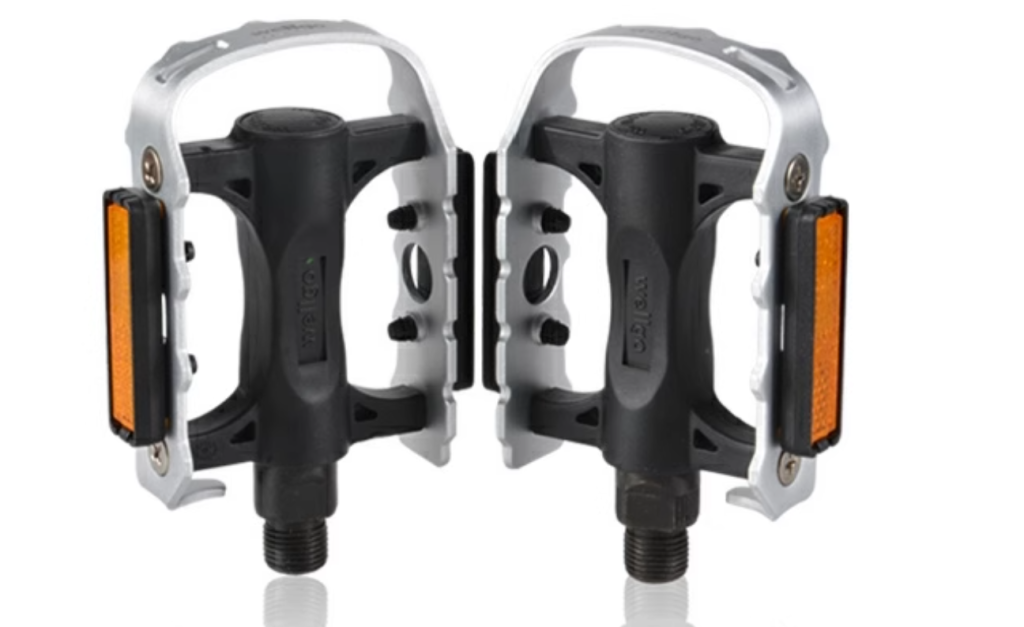
1.3 Platform Materials
Among all bike pedal types, We have flat pedals with nylon platforms, metal platforms, and composite platforms. Nylon platforms cost the least. They cut expenses. Metal platforms extend pedal life. Composite platforms, like carbon fiber, cut weight while lasting long. Each has unique strengths. None replaces the others.
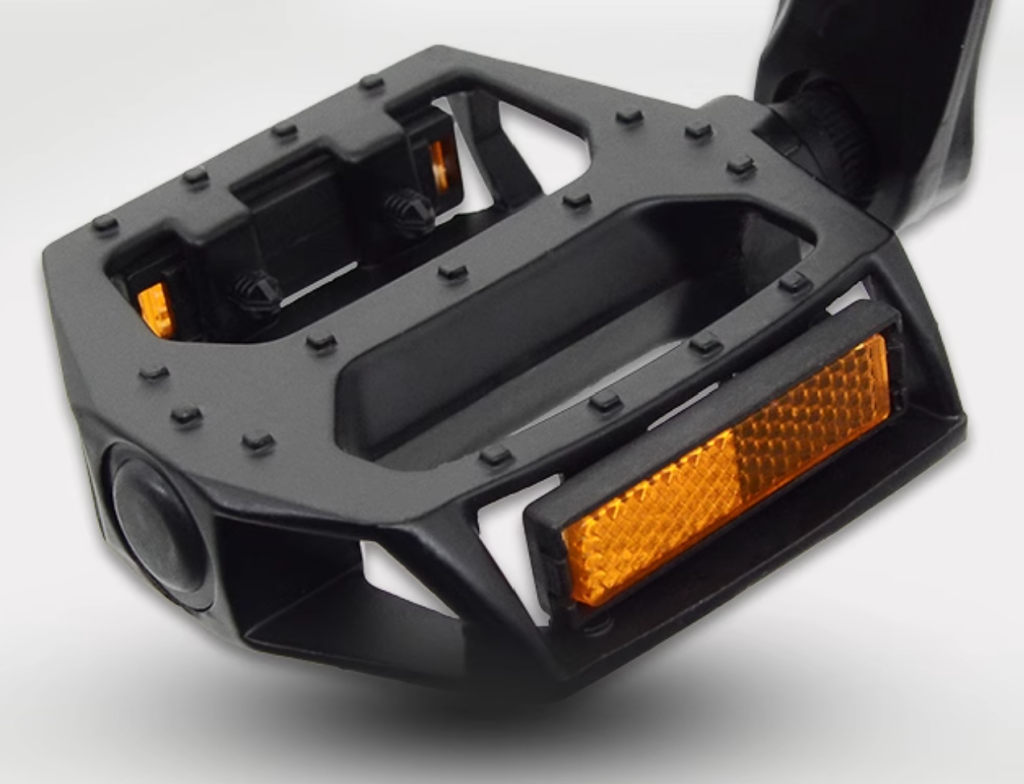

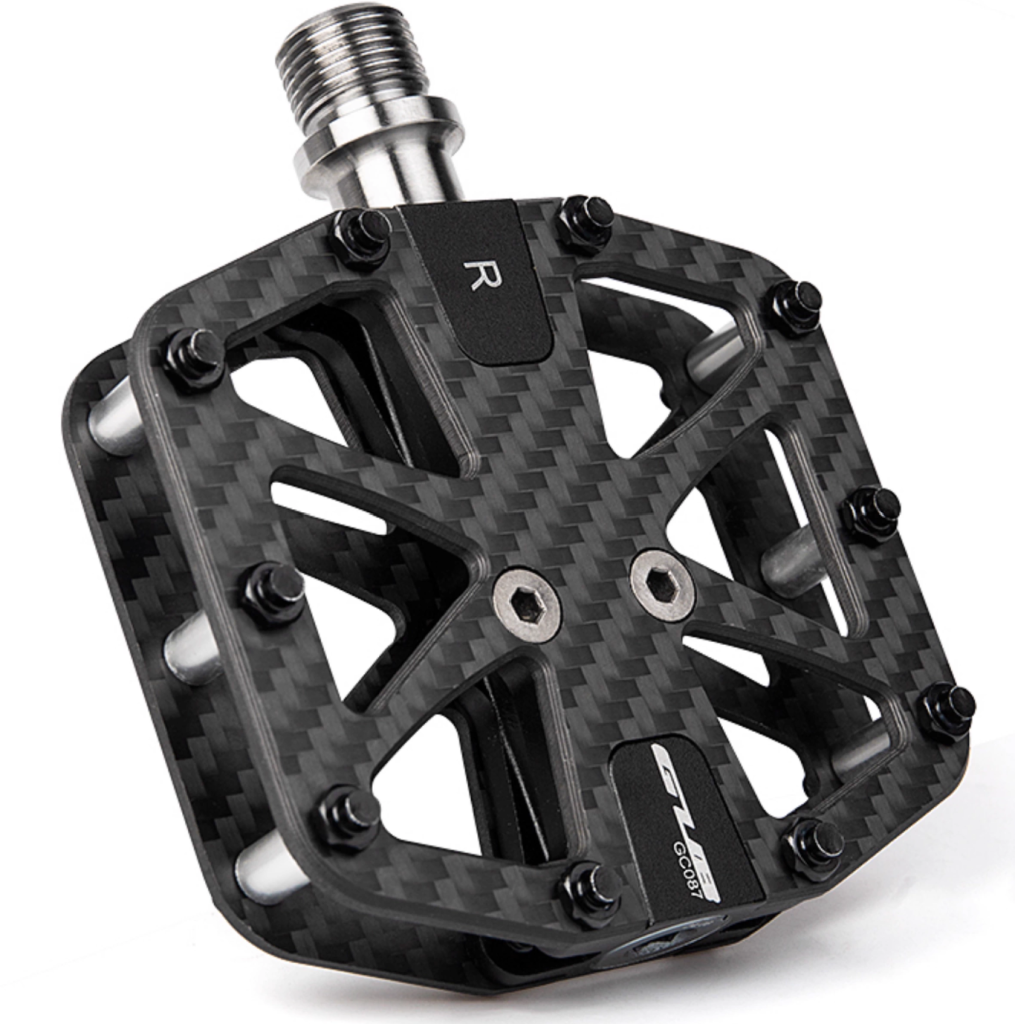
1.4 Other Classifications
Beyond the above, platform types create even more bike pedal types.
1.4.1 Platform Size
We have pedals with wide (large) platforms and small platforms. Wide platforms fit many shoes. Casual sneakers or sports shoes work. They suit commutes, city rides, or leisure cycling. Big-footed riders prefer them. Small platforms shine in pro cycling. Road races or track biking need them. They offer lightness and fine control. Smaller feet or toe-pedaling riders choose them.
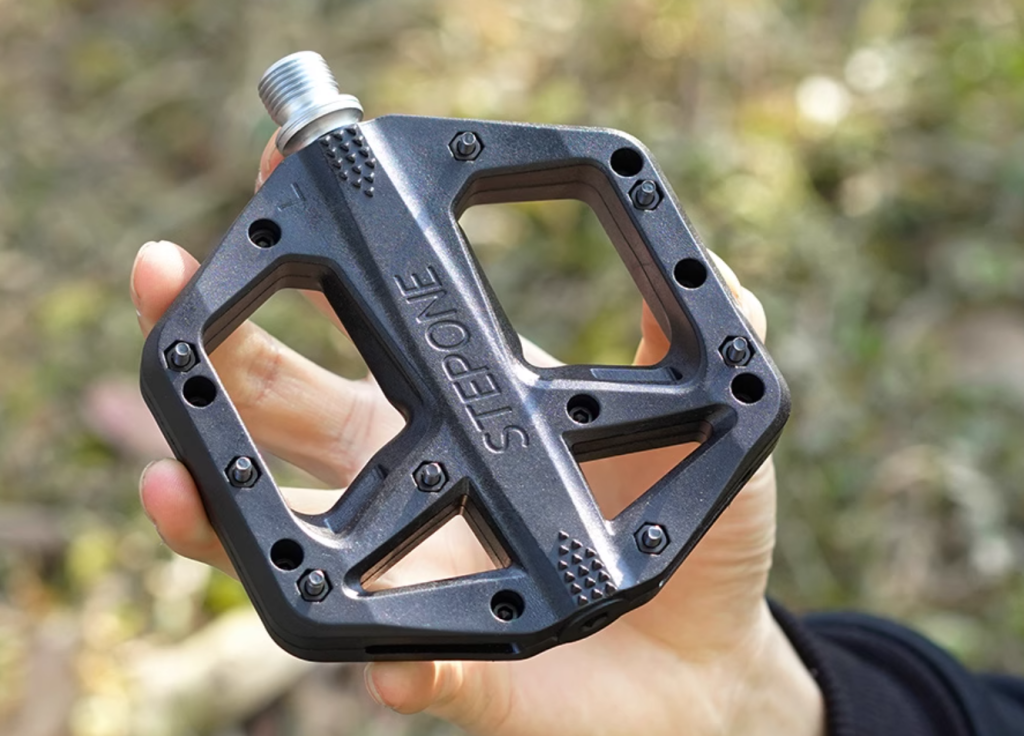
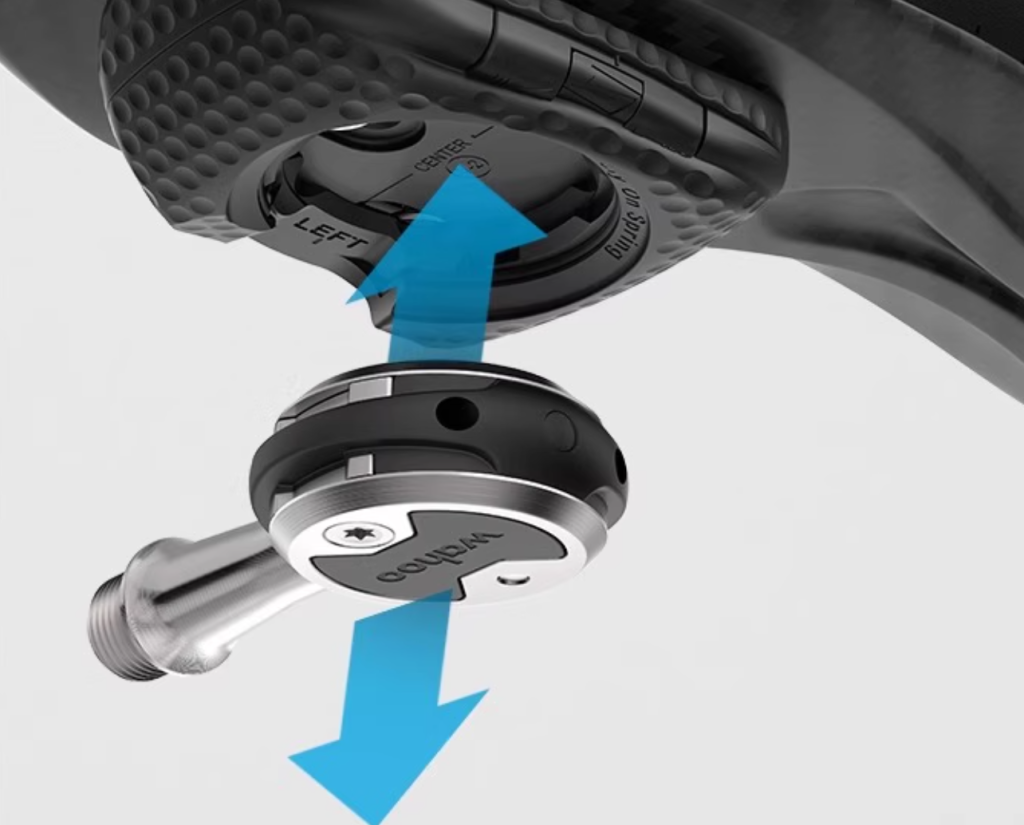
1.4.2 Foldable Platform
Folding bike pedals exist. Their key role is space-saving. Folded pedals shrink bike width. This eases car trunk or locker storage. Folding bikes get even more compact. Crowded rides see less snagging on people or objects. Parked bikes avoid pedal damage. Off-road, foldable pedals prevent crashes. If stuck, fold them fast. Shared bikes let users adjust foot position. Comfort improves. Folded pedals also ease maintenance. Access hubs better. Shipping uses less padding. Bikes shake less. But note: light folding pedals may lack strength. Pick durable ones for your riding needs.
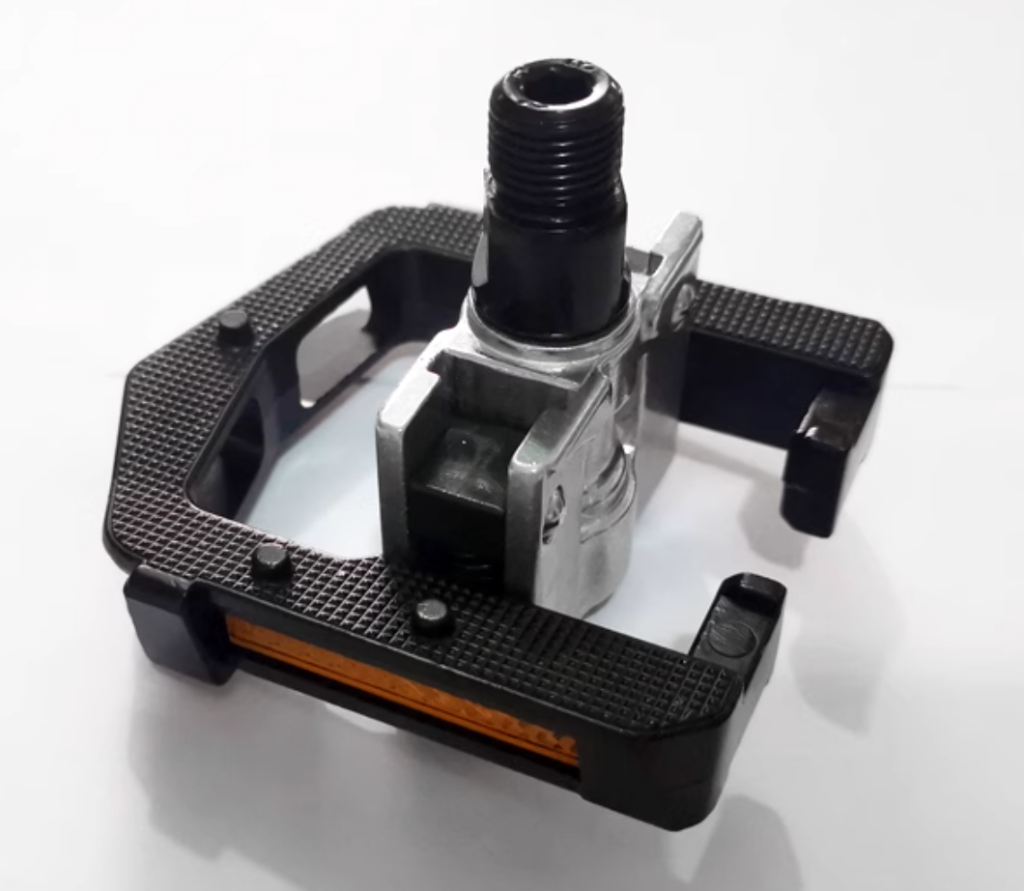
2. Clip Pedal
Clip pedals are short for toe-clip pedals or pedals with toe cages. Little needs saying here. They are mainly used on gym gear now. Bicycles hardly use them anymore.
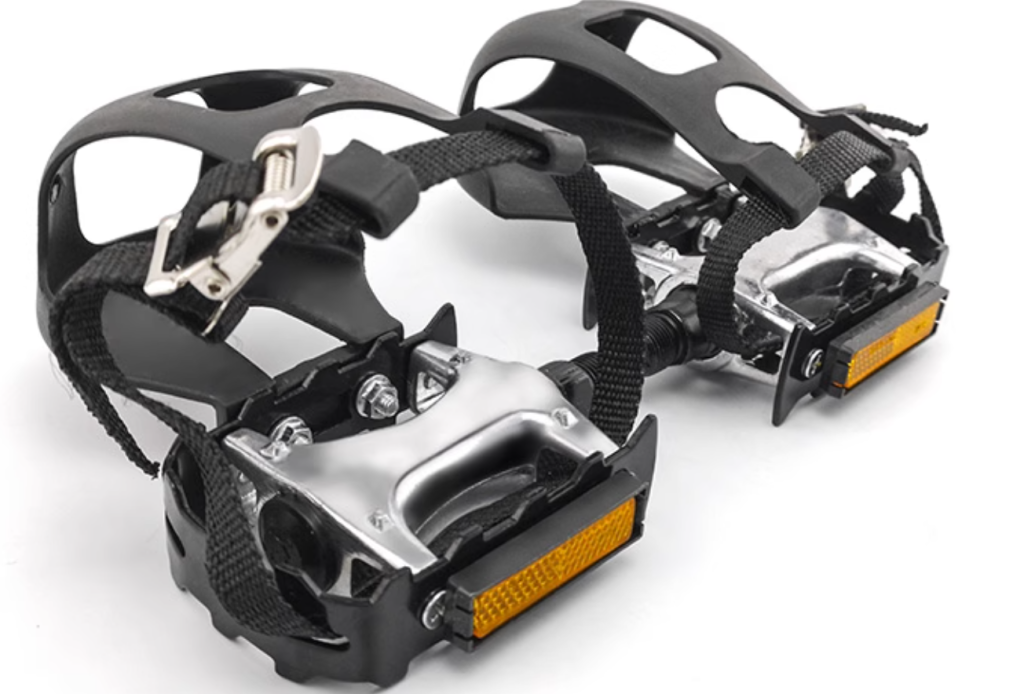
3. Clipless Pedal
This name is misleading. We know clip pedals use a cage to fix feet to pedals. When I first heard “clipless,” I thought it meant clip pedals minus the clip. Wrong. The term evolved from toe-clip pedals. But clipless pedals do have clips—advanced ones. They lock shoes to pedals via a retention clip. We call it the cleat & cleat seat system.
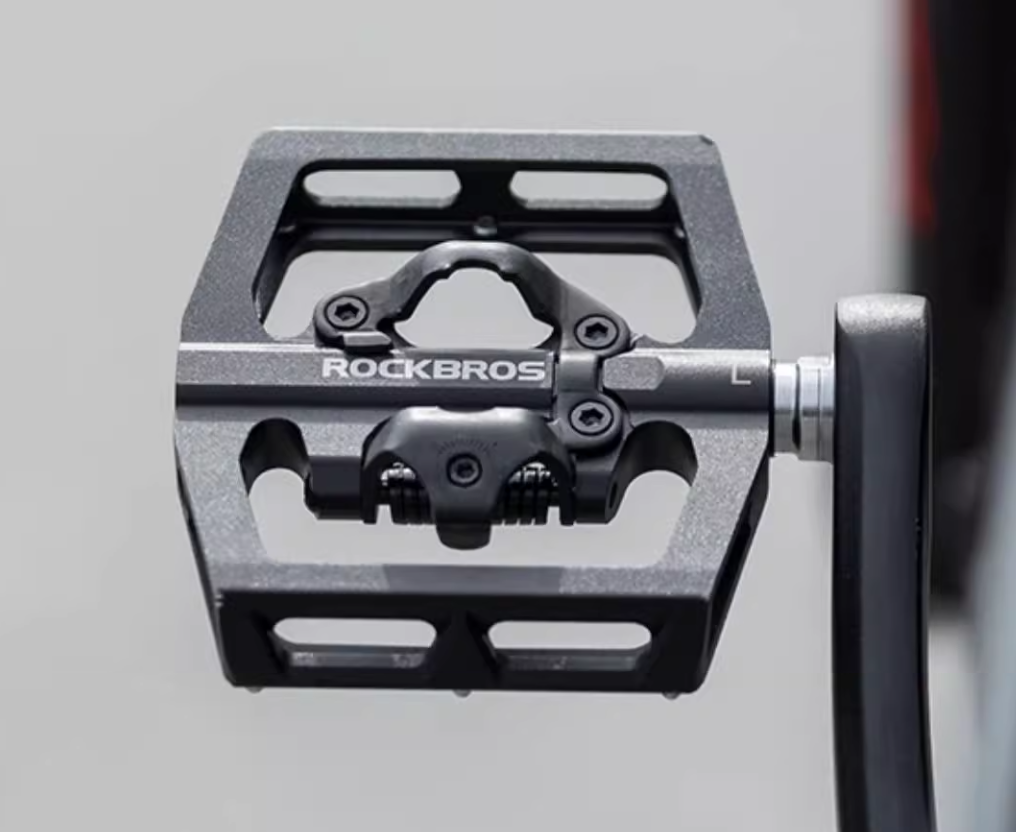
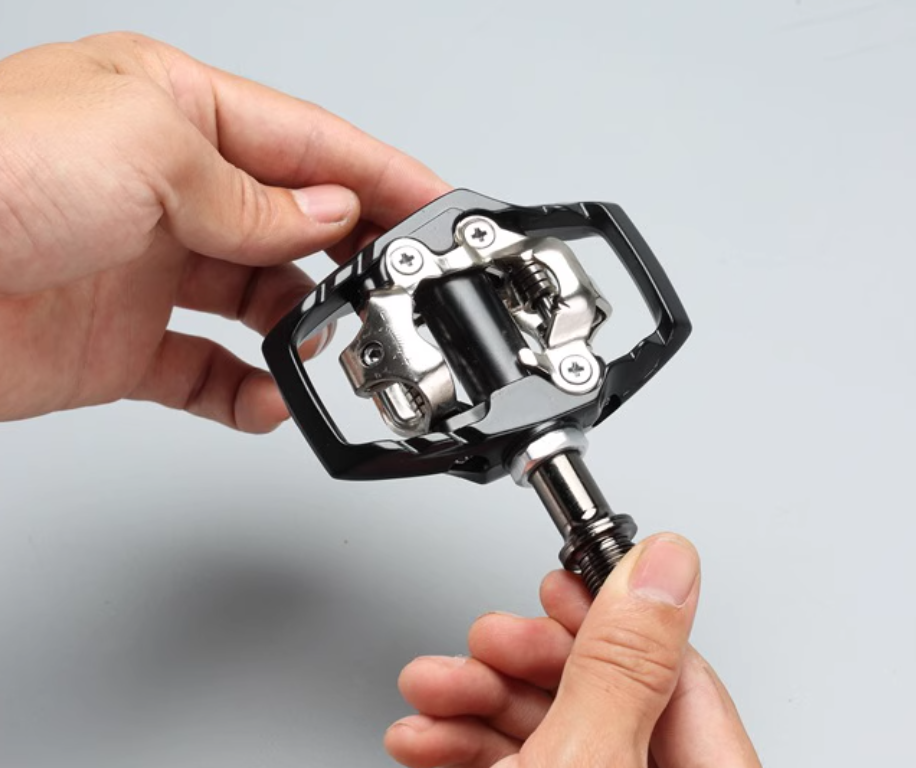
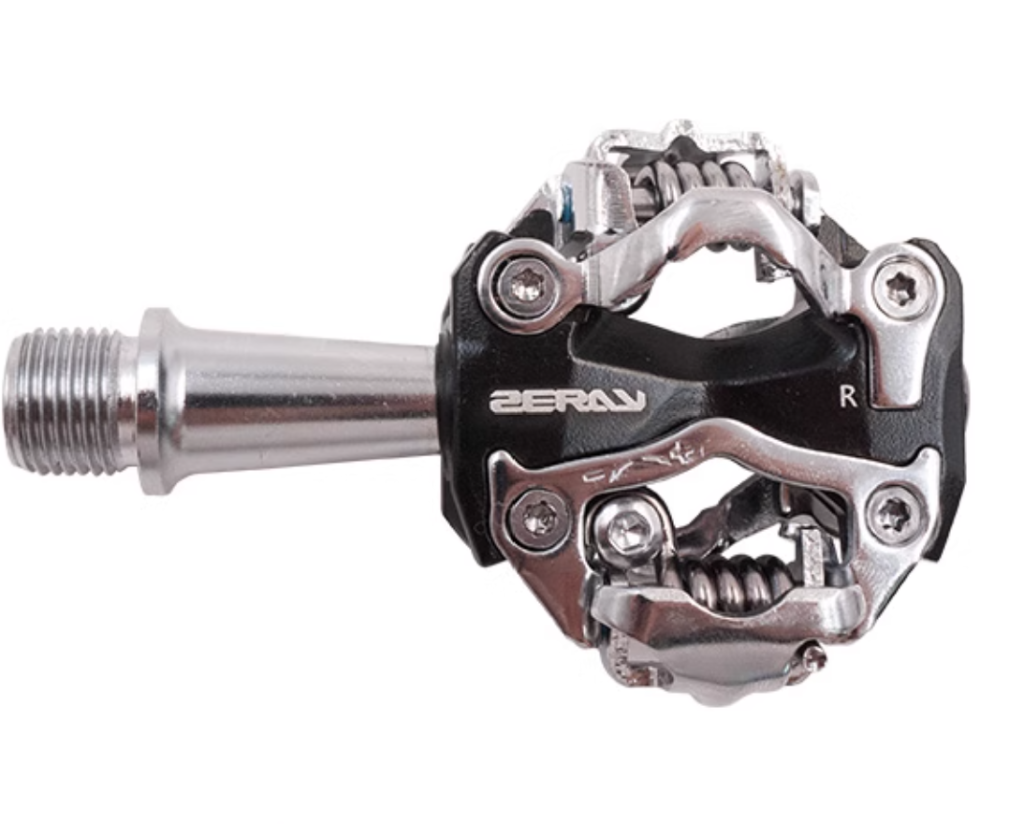
So, clip pedals fix shoes with a cage (the clip). It wraps over the shoe. Clipless pedals use a retention mechanism. It sits on the platform and locks to the shoe base. Both stop feet from slipping off. Only the locking method differs. Clipless pedals come in two types. Platform clipless pedals and non-platform clipless pedals. Non-platform clipless pedals are newer. They became popular recently. Among all bike pedal types, clipless pedals are for pros. Their main edge is weight loss. They remove extra support parts. This suits pro cyclists best.
By the way, SUMLON has been manufacturing bicycle parts for over 15 years. Contact us if you are looking for a bike parts factory or a one-stop wholesaler. Peace.


